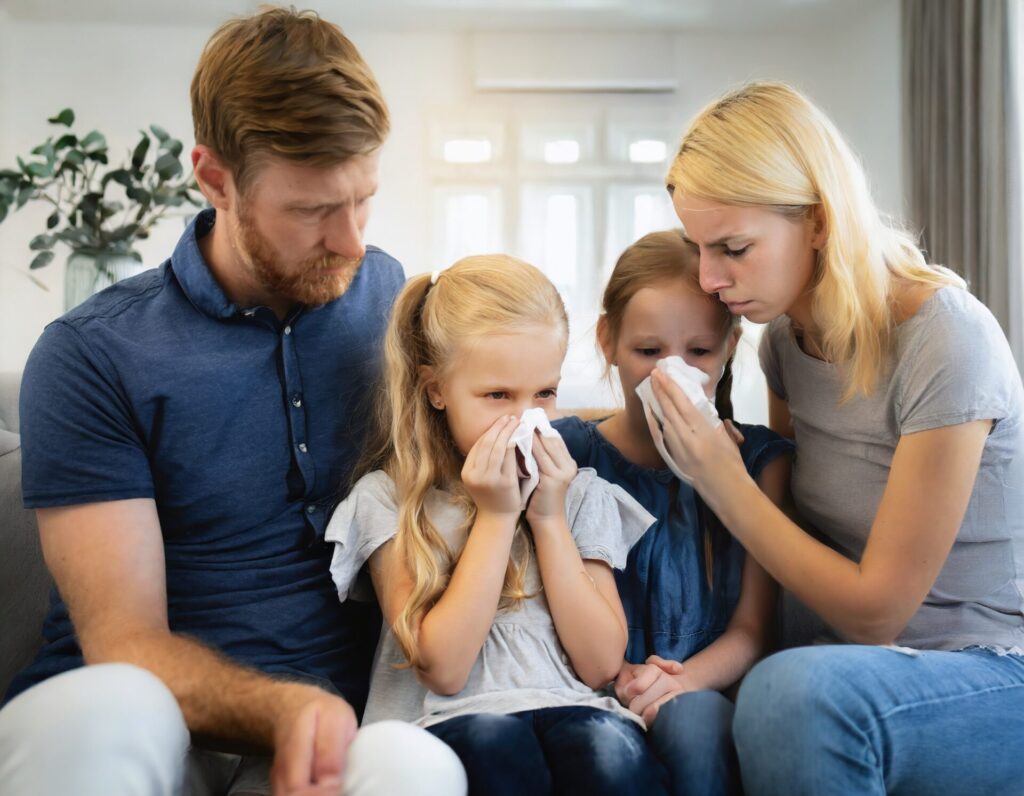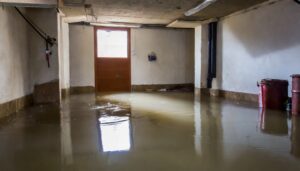
Introduction
In the serene suburbs of a vibrant city, the Johnson family was living their dream. Their cozy home, adorned with memories and echoes of laughter, was their sanctuary. However, one fateful day, an unwelcome guest turned their haven into a source of silent peril. Hidden in the corners of their basement, mold had found its abode, unleashing an array of health issues that caught the family off guard.
Mold is a silent invader, often overlooked yet capable of causing significant health problems. It lurks in the damp, humid corners of our homes, releasing spores that contaminate the air we breathe. For the Johnsons, and millions of other families worldwide, the discovery of mold is often delayed, giving it ample time to affect the health of the household.
In this comprehensive guide, we aim to unveil the health risks associated with mold exposure, offering insights into its identification, the varied health impacts, and preventive measures. Armed with this knowledge, you can safeguard your family and ensure that your home remains a sanctuary of health and safety.
What is Mold?
Mold is a term used to describe a variety of fungi that grow in the form of multicellular filaments called hyphae. These fungi are ubiquitous in nature, playing a crucial role in the decomposition of organic matter. However, when they make their way into our homes, they can become a source of health concerns.
Types of Mold
Molds can be broadly categorized into three types, each associated with specific health risks:
- Allergenic Molds:
- These molds are typically not life-threatening but can instigate allergic reactions, especially in sensitive individuals. Symptoms may include a stuffy nose, itchy eyes, and skin irritation.
- Pathogenic Molds:
- More dangerous than allergenic molds, pathogenic varieties can cause infections, particularly in individuals with weakened immune systems.
- Toxigenic Molds:
- Often referred to as “toxic mold,” these fungi produce mycotoxins that can lead to severe health issues, including respiratory and neurological problems.
| Type of Mold | Health Risks | Common Species |
|---|---|---|
| Allergenic | Allergic reactions, skin irritation | Aspergillus, Alternaria |
| Pathogenic | Infections, especially in immunocompromised individuals | Histoplasma, Aspergillus fumigatus |
| Toxigenic | Severe health issues due to mycotoxins | Stachybotrys (black mold), Aspergillus flavus |
Understanding the types of mold and their associated health risks is the first step towards safeguarding your health and home. In the following sections, we will delve deeper into the specific health impacts of mold exposure, offering insights and guidance on identification, prevention, and remediation.
Health Risks of Mold Exposure

Mold exposure can manifest in a variety of health issues, ranging from mild allergic reactions to severe chronic health conditions. The severity of symptoms often depends on the individual’s sensitivity, the type of mold, and the duration of exposure.
Immediate Effects
For many, the immediate effects of mold exposure can resemble common allergic reactions, making them easy to overlook. These symptoms can include:
- Respiratory Issues: Such as coughing, wheezing, and shortness of breath.
- Eye Irritation: Manifesting as itchy, red, or watery eyes.
- Skin Problems: Including rashes and itchiness.
Long-Term Effects
Long-term exposure to mold, especially toxigenic molds, can lead to more severe health problems:
- Respiratory Conditions: Chronic cough, asthma, and other respiratory disorders.
- Neurological Problems: Including memory loss and cognitive impairments.
- Organ Damage: Particularly affecting the lungs, liver, and kidneys.
At-Risk Populations
Certain individuals are more susceptible to the health risks associated with mold exposure:
- Children: Their developing immune systems make them more vulnerable.
- Elderly Individuals: Aging immune systems can be less effective at combating mold exposure.
- Immunocompromised Individuals: Those with weakened immune systems due to conditions like HIV, cancer, or autoimmune diseases.
Chart: Health Risks Associated with Mold Exposure
| Population | Immediate Effects | Long-Term Effects |
|---|---|---|
| General | Allergic reactions, skin irritation | Respiratory conditions, organ damage |
| Children | Enhanced allergic reactions, respiratory issues | Developmental problems, chronic health issues |
| Elderly | Aggravated respiratory and skin issues | Accelerated decline in organ functions |
The varied health impacts of mold exposure underscore the importance of early identification and remediation to mitigate these risks. In the upcoming sections, we will explore real-life case studies that bring to light the silent yet significant dangers posed by mold.
How to Identify Mold in Your Home
Identifying mold early is crucial to mitigate its health impacts. Here, we explore common signs of mold presence and steps for effective removal.
Signs of Mold
- Visual Indicators: Black, green, or white specks on walls, ceilings, or hidden areas.
- Odors: A musty or earthy smell often indicates mold growth.
- Health Symptoms: Persistent allergic reactions can be a sign of mold exposure.
Professional Inspection
While some signs of mold are apparent, others are hidden. A professional mold inspection can:
- Identify visible and hidden mold.
- Determine the type and extent of mold infestation.
- Recommend appropriate remediation steps.
Checklist for Identifying Mold
- Visual Inspection: Regularly check for visible signs of mold, especially in damp areas.
- Odor Detection: Pay attention to unusual odors, especially after rainfall or leaks.
- Health Monitoring: Track unexplained allergic reactions or respiratory issues.
- Professional Help: Seek expert inspection if mold presence is suspected.
Identifying mold is the first step towards a healthy home. Next, we delve into effective prevention and remediation strategies to combat mold and safeguard your family’s health.
Prevention and Remediation
Combatting mold requires a two-pronged approach: prevention to keep mold at bay and remediation to address existing infestations. Here, we offer actionable strategies for both.
DIY Measures
- Control Humidity: Use dehumidifiers and air conditioners to maintain optimal indoor humidity levels.
- Ensure Ventilation: Improve airflow in your home, especially in bathrooms and kitchens.
- Fix Leaks: Address leaks promptly to prevent moisture accumulation.
Professional Remediation
For extensive mold infestations, seeking professional help is crucial. Experts can:
- Identify and Assess: Determine the type and extent of mold.
- Remove Safely: Use specialized equipment and techniques to remove mold without spreading spores.
- Prevent Future Growth: Offer tailored strategies to keep your home mold-free.
Mold Remediation Process
- Inspection: Comprehensive assessment to identify mold.
- Containment: Isolate the affected area to prevent spore spread.
- Removal: Use specialized equipment and chemicals to eradicate mold.
- Cleaning: Thoroughly clean the area to remove residual spores.
- Prevention: Implement measures to prevent future growth.
Remember, if you suspect a mold issue in your home, reaching out to our expert team at DryCity Restoration can ensure a thorough home check and provide an estimate for any necessary remediation.
Legal and Insurance Aspects
Navigating the legal and insurance landscape associated with mold can be complex. Here, we break down property owners’ legal obligations and explore the role of insurance in covering mold remediation costs.
Legal Obligations
Property owners, especially landlords, have a legal duty to provide a safe and habitable living environment. This includes addressing mold issues promptly. Legal obligations can include:
- Disclosure: Informing tenants or buyers about known mold issues.
- Remediation: Taking timely action to remove mold and fix underlying issues.
- Liability: Facing potential legal actions for neglecting mold issues leading to health problems.
Insurance Coverage
Insurance policies vary, but generally, mold caused by “covered perils” like sudden and accidental water damage may be covered. Key aspects include:
- Policy Review: Understanding the specifics of your insurance policy regarding mold.
- Claim Filing: The process and requirements to file a mold claim.
- Coverage Limitations: Understanding the limits and exclusions related to mold coverage.
Table: Legal and Insurance Overview
| Aspect | Responsibilities/Options |
|---|---|
| Legal | Disclosure, remediation, liability |
| Insurance | Policy review, claim filing, understanding coverage limitations |
Conclusion
Mold exposure, a silent yet potent threat, lurks in the hidden corners of our homes, schools, and workplaces. As we’ve unveiled in this comprehensive guide, the health risks associated with mold exposure are varied and significant, impacting individuals of all ages and health statuses.
From immediate allergic reactions to chronic health conditions, the insidious nature of mold demands our attention and action. Early identification, coupled with effective prevention and remediation strategies, is pivotal in mitigating the health risks posed by mold. Legal and insurance aspects further underscore the complexity of this issue, necessitating a comprehensive approach to safeguard our health and homes.
As we step into a future where indoor air quality is as paramount as the air we breathe outdoors, being informed, vigilant, and proactive is our strongest defense against the silent invasion of mold. Together, we can transform our living spaces into bastions of health, safety, and wellness.



